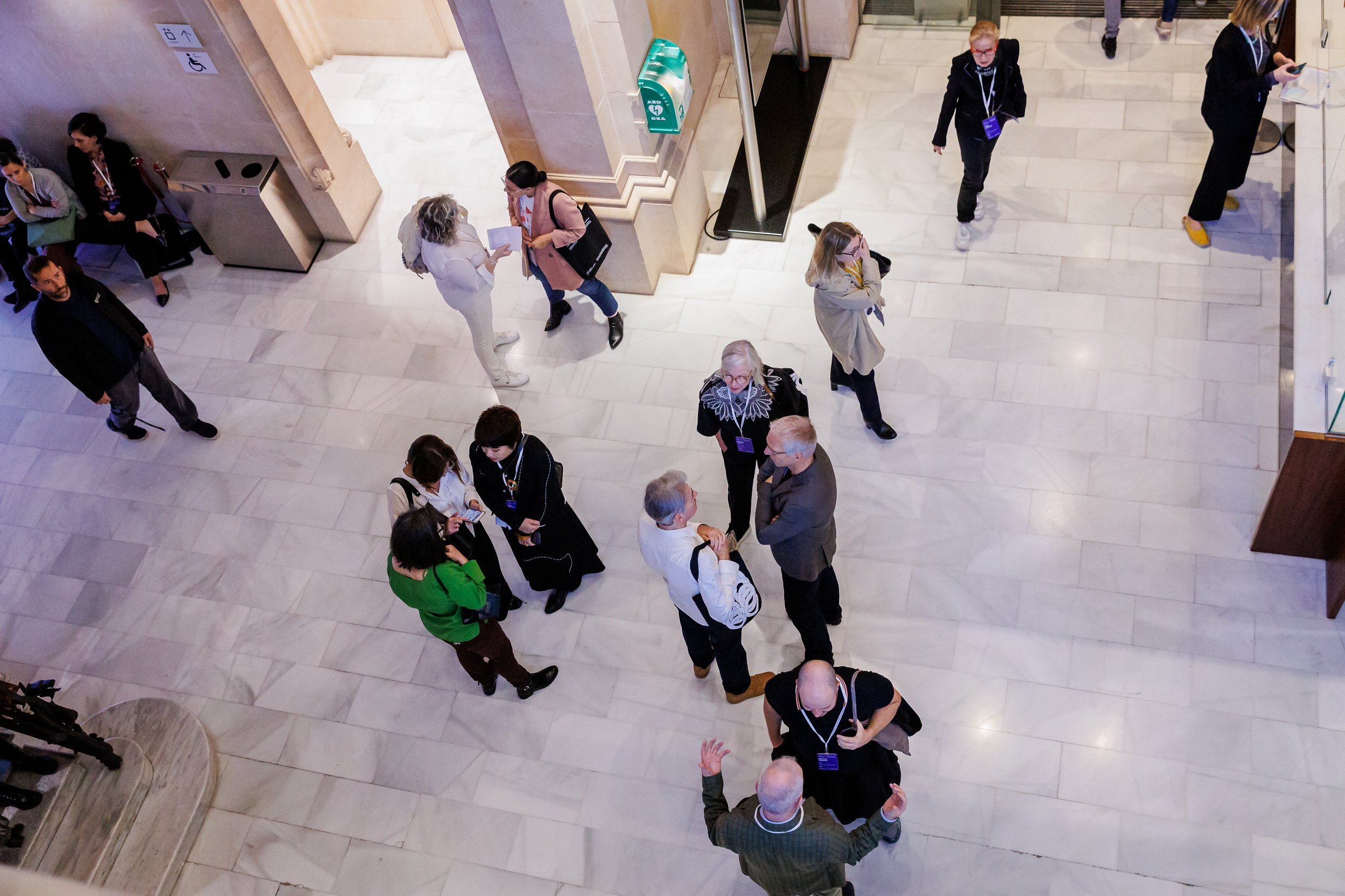CIMAM's Code of Ethics

13 September 2023
As the importance of organizational social responsibility grows, CIMAM – an international organization representing modern and contemporary art museums, collections, and their professionals – recognizes the need to establish its own code of conduct that defines how the organization relates to all its stakeholders.
The creation of this Code of Ethics underscores CIMAM's dedication to recognizing and valuing its various stakeholders. It defines the obligations and rights of the organization in its interactions with these stakeholders to achieve different goals of equal value while establishing standards of conduct that safeguard the organization's integrity and promote its long-term growth. This approach fosters constructive relationships with all stakeholders, enabling CIMAM to effectively pursue its mission, maintain its vision and purpose, and remain aligned with its core values.
CIMAM refers to the ICOM Code of Ethics – a framework dedicated to safeguarding museums and collections, human rights, and promoting exemplary practices in cultural institutions and among the professionals they encompass – to develop its own set of distinctive ethical values that will define its organizational culture. These principles not only form the basis for CIMAM's projects and initiatives but also define the organization's decision-making behavior and the way it relates to its stakeholders and society.
The focus of CIMAM's Code of Ethics aligns with the organization's mission to promote and represent best practices in the museum industry. The code emphasizes fairness, transparency, honesty, equity, and inclusion, reflecting the organization's commitment to these values.
CIMAM has also adhered to the fundamental principles of sustainability, which encompass governance, social responsibility, and environmental awareness. These principles include protecting human rights, promoting cultural diversity, ensuring representation, upholding equity, and assuming social responsibility. These principles are paramount as CIMAM represents a diverse community with different sensitivities.
CIMAM has gathered information from several of its own projects to develop this Code of Ethics. These projects include a survey to assess how modern and contemporary art museums are incorporating the United Nations Sustainable Development Goals (SDGs) into their corporate culture and work processes, rapid response webinars that encourage conversations among museum professionals about best practices, and the Code of Governance created by CIMAM's Museum Watch working group.
CIMAM has extensively reviewed the codes of ethics adopted by various commercial enterprises to ensure representation, inclusion, and fairness to all stakeholders. This analysis has helped the organization identify key sections that reflect the rights and responsibilities of all parties.
The chapters aligned with CIMAM's reality and capacity were carefully selected and interpreted based on information from CIMAM's Bylaws, its vision, purpose, mission, and values, and the sections on Museum Best Practices and Sustainability and Ecology in Museum Practice developed by CIMAM and published on its website.
CIMAM's Code of Ethics has been drafted in the following chapters:
- Chapter 1: Vision, purpose, mission, and identification of stakeholders
The first chapter of CIMAM's Code of Ethics lays a solid foundation for its ethical framework. It clearly defines CIMAM's vision, purpose, and mission, and identifies the stakeholders with whom it will carry out its mission while remaining true to its values. This initial step provides a guiding compass that directs CIMAM's decisions and interactions, as reflected in the section on the importance of ethics to CIMAM. This chapter also increases transparency and allows stakeholders to understand CIMAM's objectives, which increases their confidence in CIMAM's efforts.
- Chapter 2: General principles: Ethical risks, conflict resolution and solutions, services, and social and environmental responsibility
The Code of Ethics contains a second chapter explaining how CIMAM can put its mission and values into practice. It outlines the behaviors that CIMAM and its stakeholders are expected to adopt to interact with each other in an ethical and responsible manner. This chapter also addresses potential ethical risks and conflicts of interest arising from these interactions. By proactively identifying these risks, CIMAM demonstrates its commitment to ethical conduct and allows itself to establish protocols and methodologies to mitigate or circumvent such challenges.
In addition, this chapter highlights the resources that CIMAM can use to develop actions to help it carry out its mission. It also details the impact of its activities on the environment and society, reinforcing its commitment to sustainability and responsible engagement.
- Chapter 3: Performance criteria: Monitoring, indicators, and governance
The Code of Ethics underlines the importance of accountability and continuous improvement in its last chapter. CIMAM demonstrates its commitment to evaluating the results and consequences of its activities taking into account the well-being of its stakeholders, society, and the environment by establishing performance indicators, such as administrative, financial, communication, and governance aspects, which reinforce CIMAM's idea that ethical behavior goes beyond interactions with stakeholders and encompasses the way the organization is managed, governed and communicated. Addressing board and staff behavior at the individual level highlights the organization's dedication to ethical leadership from within, fostering a culture of integrity throughout the organization.
CIMAM's Code of Ethics is accompanied by the following internal protocols to which its Board, employees, suppliers, and patrons agree to comply: